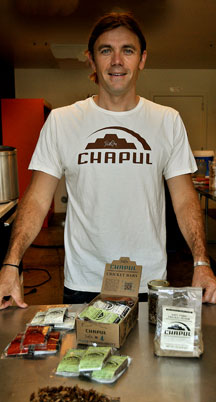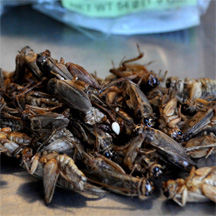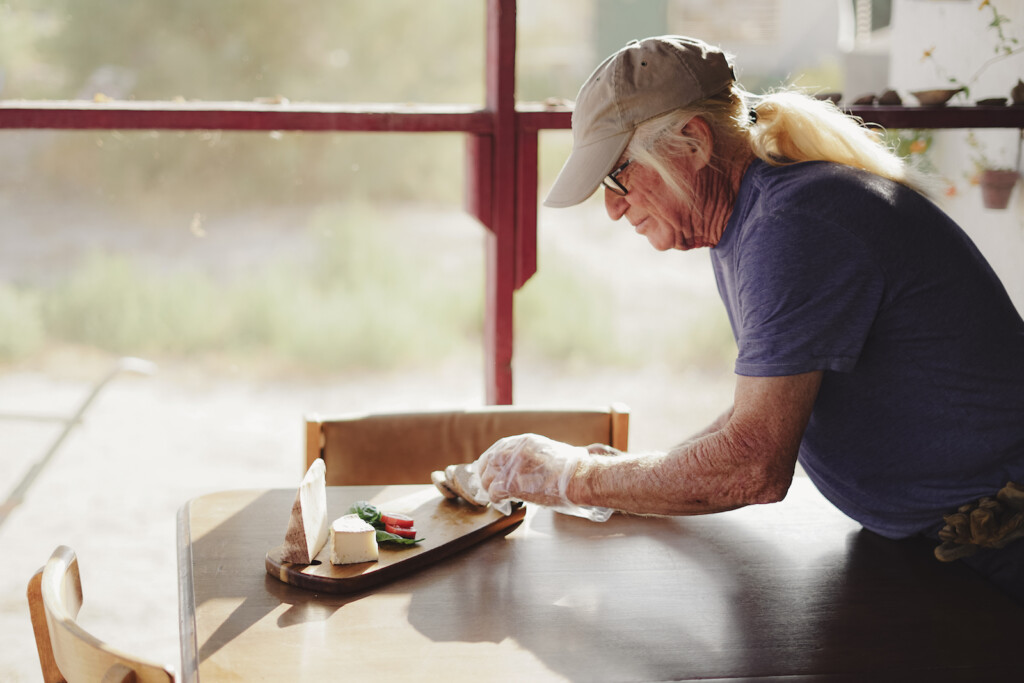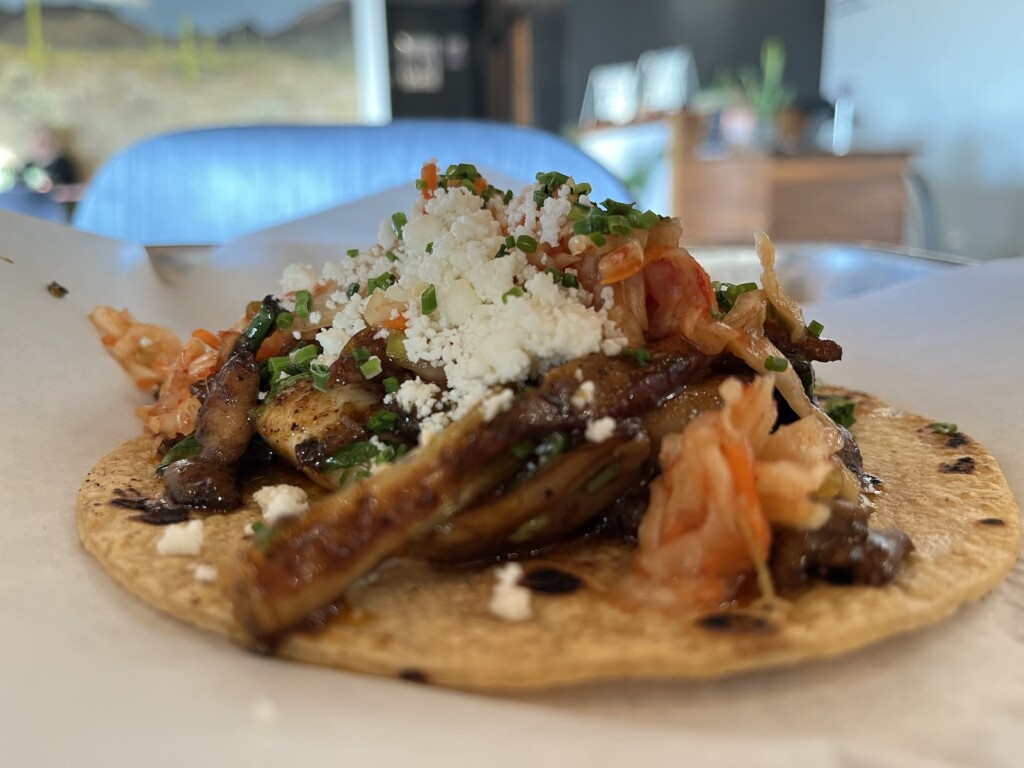
“Are they crunchy like Cheetos?” I ask.
“Well, here,” Pat says, “try one.” He slides the glass jar filled with baked crickets across the table. It’s a subtle, poker-like move. I’m not on the set of Fear Factor, but sitting with local businessman Pat Crowley. Pat has just met me and is being appropriately cautious laying down his eat-a-cricket bet. I see his wager and twist the jar’s lid. I pop one in my mouth and chew. Baked crickets are not crunchy like Cheetos. They’ve got a soft crunch, more like a shredded mini-wheats crunch.
Pat understands the direct link between agricultural water consumption and the dwindling flow of our western rivers. His concern for natural ecological balance has led him to become an advocate for alternative food sources. Studies show it takes approximately 2,500 gallons of water to produce one pound of beef. “It takes one gallon of water to produce one pound of cricket protein,” Pat states. In addition, crickets provide fully digestible proteins as well as other nutrients. “If we can tell our backstory and why we’re doing it,” Pat says, “a hundred percent of people are willing to try it.” That backstory has fluid roots in Pat’s love for wild rivers and their continued existence.
Pat is a river guide-hydrologist turned businessman. Just over a year ago he and his dedicated team of insect-eating enthusiasts started making and marketing an energy bar made with cricket flour under the name Chapul, a moniker derived from a Mexican word for grasshopper. The biggest challenge the company faces is two-fold—introducing the nutritional value of eating insects, and explaining that insects are a sustainable food source for the future of a limited resource planet with a growing population.

At the turn of the 20th century, social progressives pressed the federal government to address health and safety practices in industrial food processing. Currently, the FDA lists insect fragments among food contaminants, but fast forward to the future and society may be progressing in a new direction. “There’s no common reaction to the idea of eating insects,” Pat explains. “The average response depends on the demographic.We introduced our product at a business event called Green Drinks, and 99 percent of the people tried it. A week later we were at a conservative event in Park City and only 10 percent of the people taste-tested our bars.” At an LA event one woman asked Pat, “Do you eat these every day?” Her response when he answered, “Yes,” was, “You have beautiful skin,” and promptly bought some bars. Pat introduced Chapul to a Rowland Hall freshman classroom. At first, the young people responded to the bowl of baked crickets in a conventional and prescribed manner—“Oh, gross!” But after Pat gave his ardent sustainability talk, “All the kids ran up and tried them,” he says.
Chapul makes not only the bars, but also one of the product’s ingredients–cricket flour. A large part of the company’s start-up costs were related to ingredient testing. “The Utah State University Food Sciences was an amazing resource for us,” Pat notes. “Lab testing yielded yeast, mold, bacteria and heavy metal-free results.”
Chapul bars are made with high-quality ingredients and come in three flavors. Sold at local grocers here and in the UK, “Feed the Revolution” is the company’s motto. You don’t see that on a bag of Cheetos.






